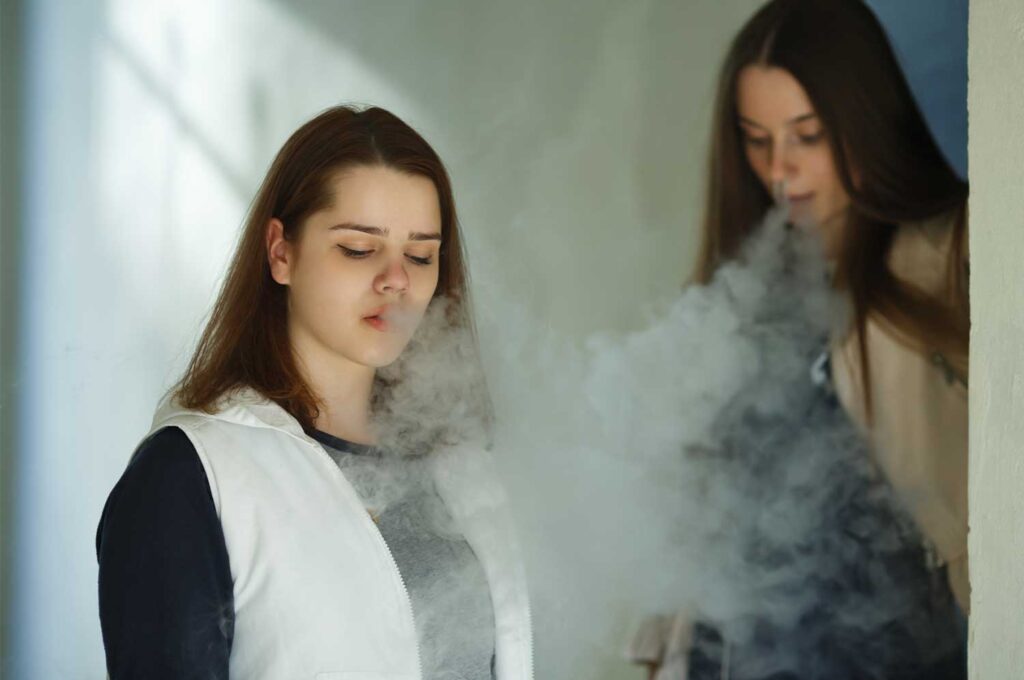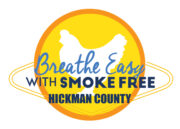Tobacco-Free School
Tobacco-Free Schools Toolkit
Administrators, educators, school health services professionals, and other staff can use this guide to educate students about the dangers of using tobacco products, maintain a healthy school environment, and implement evidence-based programs to reduce tobacco use among youth.
Note: In this page, the term “tobacco product” refers to combustible products (e.g., cigarettes, cigars, cigarillos), smokeless products (e.g., snuff, dip, chew), and e-cigarettes (e.g., JUUL), regardless of whether they contain nicotine.
About Youth Vaping
E-cigarettes have been the most commonly used tobacco product among U.S. youth for the past five years. Use of e-cigarettes, which is called “vaping,” has reached epidemic levels among youth, with a 2018 report from the National Institute on Drug Abuse estimating at least 37% of U.S. 12th graders had used an e-cigarette in the past year.
The vaping epidemic is particularly bad in Kentucky, where use among tenth graders jumped 200% from 2016 to 2018. More than one in four Kentucky high schoolers and 14% of eighth-graders say they’ve used an e-cigarette in the past month.

Tobacco Product Use Among U.S. High School Students

What Schools Can Do
Fortunately, there are a number of tools available to help Kentucky’s schools combat the dangerous trends in tobacco use.
In 2019 the Kentucky legislature passed House Bill (HB) 11, which gives school districts the opportunity to pass tobacco-free school policies that include e-cigarettes. These policies establish tobacco-free environments as a norm, while providing opportunities for adults to model smoke-free lifestyles and reducing exposure to secondhand smoke and aerosol.
There are also a number of resources to help schools provide prevention education during the school year, when the risk of become addicted to tobacco products is greatest.
100% Tobacco-Free School policies can reduce youth tobacco use by up to 30%
Tobacco Education Resources
CDC’s Office on Smoking and Health (OSH) developed Know the Risks: A Youth Guide to E- cigarettes to educate youth on e-cigarettes, including the health risks, the factors that lead to e- cigarette use, and what youth can do to avoid all tobacco products. This presentation is designed to be given by an adult who works with young people (e.g., educator, troop leader, coach, youth minister). The presenter does not require additional information or permission to deliver the presentation. @CDCtobaccofree on Twitter
Resources to Quite Smoking or Vaping
My Life, My Quit is a free, confidential service for pre-teens and teens who want help quitting tobacco products. By enrolling, teens receive five one-on-one coaching sessions with tobacco treatment specialists who have been trained in adolescent cognitive and psychosocial development. Coaches are available by phone, text, or online chat. Participants develop a quit plan, identify triggers, practice refusal skills, and receive self-help and educational materials designed specifically for teens, with input from teens. Participants should visit MyLifeMyQuit.com, or call or text “START MY QUIT” to (855) 891-9989 to register.
Other Resources
Discipline Is Not the Answer Policy Statement
Better Approaches to On-campus Student Tobacco Use
Enforcing a 100% Tobacco Free School Policy
How schools can increase student compliance with tobacco-free school policies and best practices on responding to student violations.
Mental Health and Nicotine Report
How Big Tobacco has linked nicotine and mental health
School Toolkit - KTPC
Tobacco-Free Schools Toolkit
My Life My Quit
My Life My Quit Business Card for Teen
